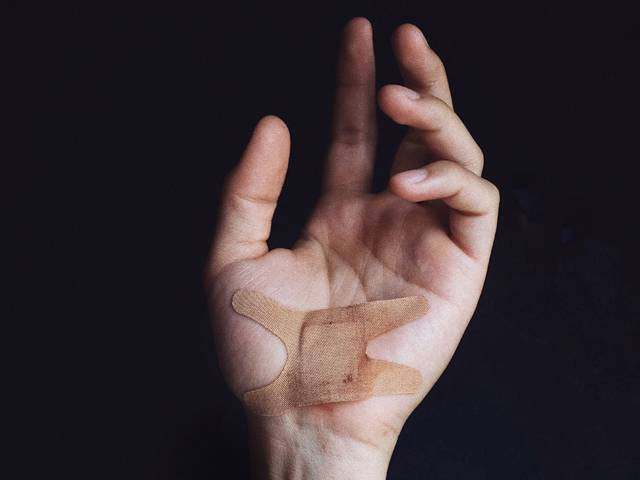Adhesives Causing Allergic Contact Dermatitis

Several research studies show that the adhesives used in some glucose sensors and post-operative dressings cause allergic contact dermatitis.
Dr Mei Tam, dermatologist, Fellow of Australasian College of Dermatologists (ACD) and President of the Skin and Cancer Foundation Inc says: "I have a 59 year old diabetic patient at Royal Melbourne Hospital who started to use a continuous glucose monitoring device to work out her random hypoglycaemic attacks. The newly introduced device is attached by an acrylic adhesive to her arm and is replaced fortnightly. It wirelessly connects to a smartphone app and provides accurate information about her glucose readings throughout the day."
"After six months, she noticed that the skin underlying the device had started to become red and itchy with blisters. This allergic reaction would happen faster with ongoing use and appear within half an hour of applying the device. The patient had no history of allergies and was treated with topical cortisone. After patch testing, I concluded that she was allergic to the adhesive, isobornyl acrylate, found in the glucose sensor."
Several other research studies have shown similar results. In Germany, 15 patients were found to be allergic to the isobornyl acrylate in the adhesive used to join two parts of the sensor together, causing allergic skin rashes.
Ms Margie Morgan, the aforementioned patient of Dr Tam, says: "After having successfully used the glucose monitoring system for about six months, my body started rejecting the sensors, with severe blistering causing the sensor to lose contact and stop reading. I was annoyed that such an expensive and necessary device would stop working. After being referred to Dr Tam, I was prescribed mometasone furoate to clean up the reaction."
"We finally settled on a complicated treatment regime of a steroid lotion followed by a barrier wipe, a handmade circular cut out of hydrocolloid dressing with a hole punched centrally to allow the sensor's canula through, a drop of the steroid lotion in the hole, followed by the sensor and topped by a circular adhesive patch that holds the whole lot down. This has reduced the size and severity of my reaction. I was fortunate that Dr Tam and everyone else involved in my case went out of their way to find a solution for me. The adhesive on glucose sensors should be changed, or at the very least, someone should produce a pre-cut hydrocolloid dressing to fit these glucose sensors and prevent this problem for others."
Dr Bernadette Ricciardo, dermatologist and Fellow of the ACD, has reported another problem with an acrylic adhesive. She says: "We are seeing more and more cases of allergic contact dermatitis to medical glues used for surgical wound closure, particularly following orthopaedic surgery. These glues contain 2-octyl cyanoacrylate, which has been shown to be the allergenic compound."
Most patients have had previous exposure to the medical glue with no or minimal skin reaction. It is typically with the second exposure to the glue that a severe, itchy, blistering rash occurs. In these patients, the itch and rash typically develop at the site of glue application within 24 to 72 hours of surgery.
Dr Ricciardo says: "While the glue remains in contact with the skin, the itch and rash continue to escalate. Therefore, it is very important that this reaction be recognised early, so that any residual glue can be completely removed from the skin surface. The contact dermatitis is typically managed with application of a strong steroid ointment, and occasionally oral steroids are required for more severe cases."
In the six orthopaedic cases, which Dr Ricciardo recently reported, the contact dermatitis settled within two weeks of removing the glue and importantly there was no adverse impact on the surgical outcome.
It is important that patients with suspected allergic contact dermatitis to medical glue undergo patch testing by a dermatologist. This confirms the allergy so that the patient knows what they need to avoid in the future. Patch testing can also assess for cross reactivity with other cyanoacrylates, which may be present in other glues.
Dr Ricciardo says: "If your surgeon plans to use a medical glue for your surgical wound closure, be sure to inform them if you have previously developed itch or rash following exposure to any cyanoacrylate-containing glue. We would recommend that in those cases, these glues are best avoided."
For further information on the ACD, visit www.dermcoll.edu.au, or see our updates on Facebook or Twitter at @DermatologyACD #dermcoll or LinkedIn
Photo by Brian Patrick Tagalog on Unsplash
MORE



